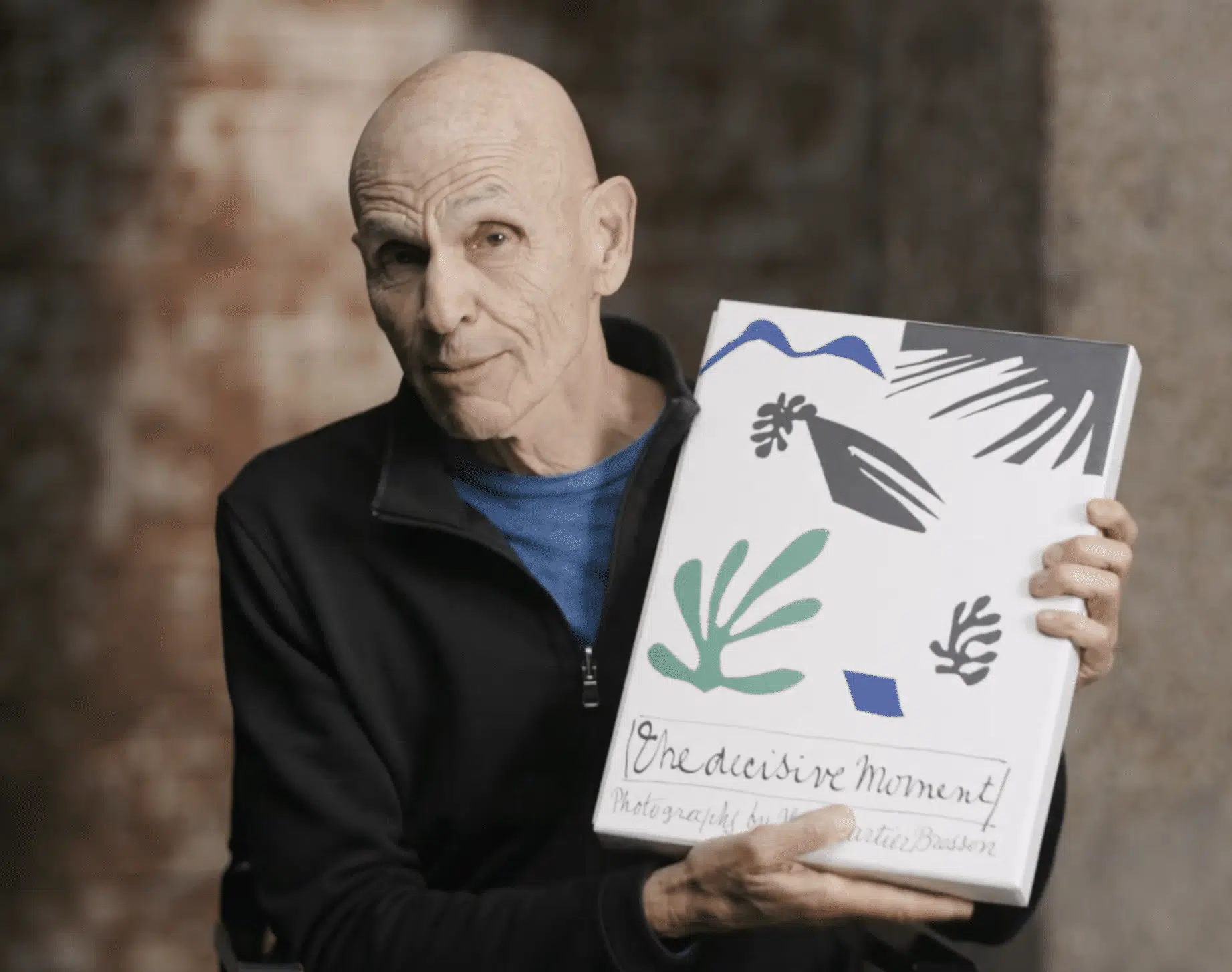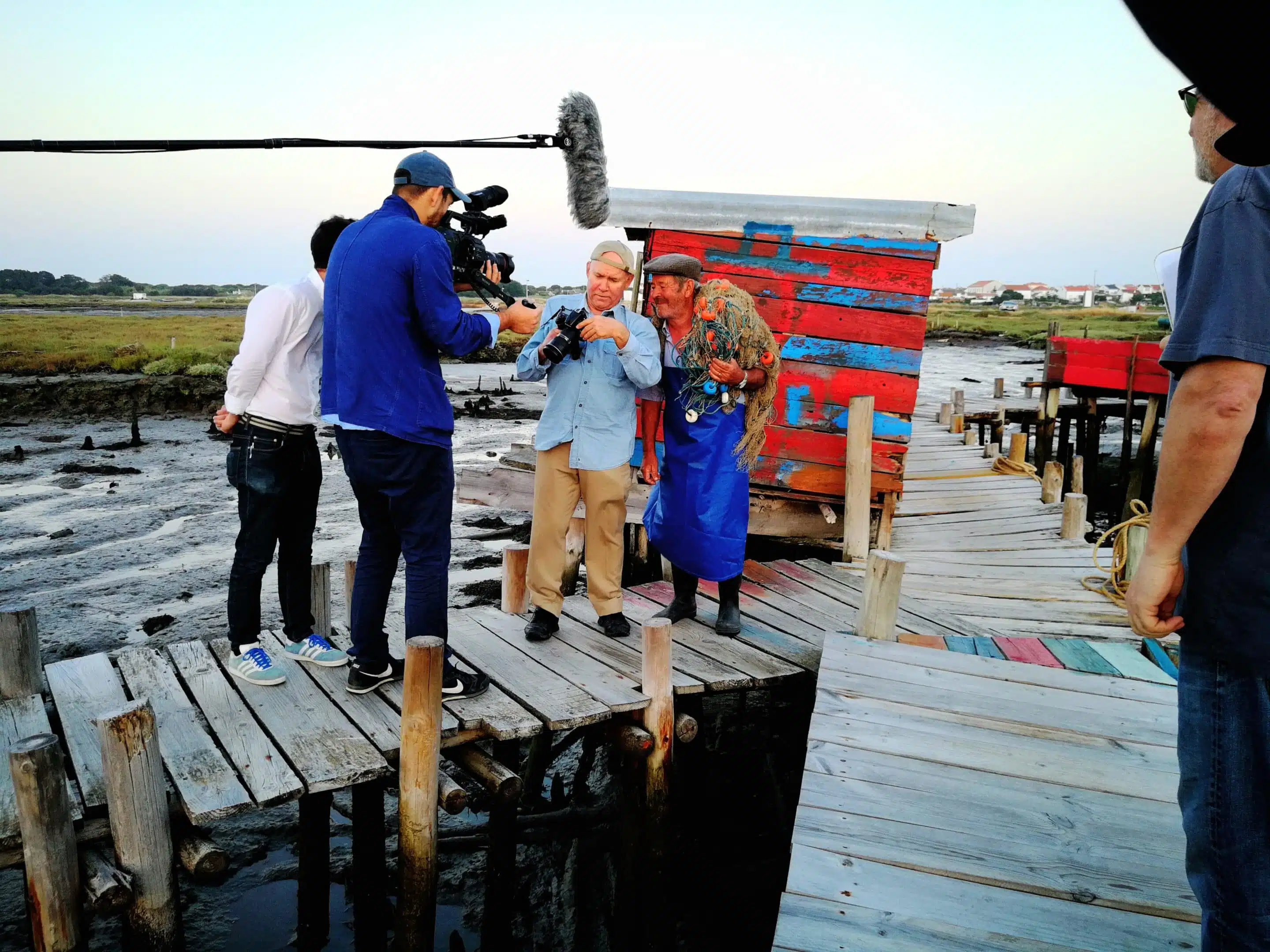Reading the Right Books
Our very ethos here at Masters of Photography is that one can drastically improve their craft by learning from the greats that came before them. Even the Masters themselves acknowledge the debt they owe to photographic legends like Cartier-Bresson. After all, standing on the shoulders of giants gives an excellent view. And it is with this view that photographers can develop their eye, namely by observing the great work of their predecessors collected in their books. As Joel Meyerowitz says in his online photography class: “it’s important to have books around, to have the literature of photography available to you. Not so much that you could copy or steal from these artists, but that you could find in their work the same impulses that you have”.

“It’s important to have books around, to have the literature of photography available to you. Not so much that you could copy or steal from these artists, but that you could find in their work the same impulses that you have” – Joel Meyerowitz
“It’s important to have books around, to have the literature of photography available to you. Not so much that you could copy or steal from these artists, but that you could find in their work the same impulses that you have” – Joel Meyerowitz

Generously opening his personal library to viewers of his online photography class, Albert Watson takes a broader approach to photography literature and recommends the very affordable route of purchasing second-hand auction catalogues from fine art institutions like Sotheby’s and Christie’s. While these may not have the same prestige as the iconic photography books that adorn coffee tables all over the world, they do provide an enormous amount of variety. As Albert notes “You would have 19th century photography, then you would have… modern photography from a year ago, and everything
in between. And I was just fascinated by these books, the diversity. There would be a landscape and a portrait, there would be still lives, there would be reportage from all the great photographers.” Such variety can even extend to other art forms like painting which can provide a visual form of inspiration that can be extrapolated and applied towards photography.
For more recent additions to the world of photography literature, check out this article on the best books of 2021 in our photography blog.
Beyond Books
While books have been the traditional vehicle for photographic wisdom, it would be remiss in the modern age to rely on them solely when such a wealth of knowledge is available elsewhere. Beyond the photography books he recommends, Albert suggests engaging with pop culture for inspiration citing works like Lord of the Rings and Game of Thrones for his landscapes. Meanwhile, David Yarrow extols the importance of research in his photography, stating “we’ve got a huge advantage over people… working in photography in 1979 or even 1989, or even maybe 1999. And the internet gives you so much information… Research is the platform on everything that we do. And research is also free. So, we will never go into the field without having done a huge amount of homework. I think you do tend to photograph best what you know best.” Indeed, the vital resource of the internet is an almost limitless font of knowledge which any photographer can make use of, it’s how we transmit the knowledge of the Masters in our online photography courses after all; meanwhile, our Photostream & photography forums are further examples of where one can seek inspiration. Furthermore, those looking for free photography videos might wish to make use of our Freestream and other free films or sign up to access free photography lessons from our courses. As David says “never underestimate how much better a photographer you can become by using something that’s free, which is the internet”.
So while choosing your guidance in how to become a photographer from home can be a daunting task, whether you’re looking for books or otherwise, there are countless affordable and accessible ways of finding inspiration.
Photographing your Neighbourhood
While the Masters’ learning recommendations range from unparalleled collections of street photography to the limitless resources of the internet, they share one thing in common – the extraction of photography beauty from everyday life. Joel and Steve may travel to distant locales for their street photography, Albert may create his fashion photography with world-famous celebrities and David’s animal photography may feature the most exotic of wild creatures but it is important to remember that they did not start here. David Yarrow, for example, got his start photographing local sporting events and even now, creates beautiful images out of rural towns, shipyards and even rubbish dumps. While your everyday surroundings may be mundane and monotone to you, it could be fascinating to an outsider and the right photograph might just invoke a brand new aspect that breathes new life into your neighbourhood. There is no shortage of genres to practice your ambitions of being a photographer from home.

‘Antz’ by David Yarrow (2015)
As Joel and Steve’s book recommendations indicate, street photography is an excellent way of finding photographic beauty in the comings and goings of everyday life. Despite its reputation, this doesn’t necessarily have to take place in thriving urban centres like New York and Paris. Any public place where people are coming and going is ripe for candid photography. Similarly, wildlife photography is plagued by the inverse stereotype, that it must occur in deep wilderness far from civilisation and must have as its subject the most exotic creatures. However, there is wildlife everywhere; backyard critters and even urban vermin can make for some fascinating animal photography. Indeed, deer, dogs and other more everyday animals are part of David Yarrow’s corpus.
Meanwhile, model photography like Albert Watson’s need not feature professionals or renowned celebrities. Any friend or relative can serve as the model for your portraiture (and unlike painting, it won’t even take up much of their time). In his virtual photography course, Steve expresses a similar idea in his high praise of Elliot Erwitt’s Photographs and Anti-Photographs (another of his books recommendations): “Some of Elliott’s best photographs are of his family these are two pictures he took of his wife and his child in the bedroom. And you can see the baby and the mother. And again, you don’t have to travel far. You can photograph your family, you can photograph in your own neighbourhood. These pictures of Elliott’s are so human and tell such great stories… you can make some of the best pictures just working close to home.” If you’ve got no loved ones at hand, with the right set-up of a well-placed mirror, you can even be the model of your own photography. The ‘selfie’ might be most associated with social media vanity but self-portraiture is a time-honoured art form in both painting and photography.
While your everyday surroundings may be mundane and monotone to you, it could be fascinating to an outsider and the right photograph might just invoke a brand new aspect that breathes new life into your neighbourhood.
While your everyday surroundings may be mundane and monotone to you, it could be fascinating to an outsider and the right photograph might just invoke a brand new aspect that breathes new life into your neighbourhood.
Another genre perfect for those learning how to be a photographer from home is still life. Unsurprisingly, the craft of photographing commonplace, inanimate objects is very accessible to the home photographer. Albert’s most famous still lifes feature renowned objects like Neil Armstrong’s spacesuit and the possessions of Tutankhamun but his first forays into the genre involved far more mundane and vulgar subject: bedpans. Joel similarly excels in finding an interesting facet in ‘junk’ for his still life work, really putting the life into still life photography.
Just as is the case with reading the right books, there aren’t nearly as many barriers to practicing photography from home as one might initially think. Try picking one of the above genres and see how you can make your everyday surroundings shine with your photography.
Marketing Yourself as a Photographer
So now that you’ve read up on your craft and practiced it in its purest form, what’s next in learning how to become a photographer from home? While one doesn’t have to be a professional photographer to call themselves a photographer, it is the motivation of many; and even hobbyists might wish to develop a portfolio. Whilst times have changed since the masters found their success, something each one explicitly acknowledges, the sage advice they give is nevertheless still relevant and truly timeless in its wisdom.
“If you want to make your living as a photographer, photograph every day. This should become a part of your life.” – Steve McCurry
Steve also acknowledges the importance of the hard work but encourages the photographer not to forget their purpose: “I think the most important thing to know, if you want to make your living as a photographer, is to photograph, make pictures. It seems simple, seems obvious, but too many people spend their time on the phone… but if you want to make your living as a photographer, photograph every day. This should become a part of your life.” Ultimately, the professional photographer must balance these two halves of themself – be professional but still be a photographer. Or as Joel ever-eloquently puts it: I think before you put the cart before the horse, you learn to ride the horse. You learn to express yourself, to make photographs that are true to you consistently so that you actually have something to sell.”
While putting your work out there can be a daunting endeavour, creating a well-defined brand that is true to yourself will undoubtedly get you off on the right foot to start pitching to galleries, creating prints or putting together a book and in the 21st century, more than ever before, this can all be done from home.
Keep on learning!
We hope this guide has helped you, wherever you are on your journey of becoming a photographer from home but keep in mind, for beginner and advanced photographers alike, there are always new things to learn. At Masters of Photography, we want to inspire and educate philosophers of all levels – amateur and expert, hobbyist and professional – with the knowledge and lived experience of the true greats, which is why we created our online photography courses.
If you feel inspired by the Masters’ knowledge presented above, be sure to check out their free photography lessons!

For the first time ever Joel explains his life’s work, influences, methods and ethos – all in one incredible Masterclass. Travel with Joel in Tuscany and New York to learn his ideas on street photography, portraiture, still life and much more.
Take your photography to the next level with an exclusive online video Masterclass with Steve McCurry. This is a unique opportunity to study him at work, on location in Cuba and Portugal and follow his thought process in creating his incredible images, crafting captivating visual stories and adding authenticity and emotion to images.
Access over 25 episodes packed with Steve’s tips and advice, which you can return to and watch over and over again.



